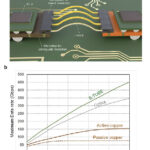Copper wiring vs aluminum wiring — this has been a long-standing debate in the electrical industry. Whether you're planning a residential, commercial, or industrial project, choosing the right type of conductor material plays a crucial role in safety, performance, and long-term reliability.
In this article, we break down the key differences between copper and aluminum wiring, their pros and cons, and when each should be used.

Copper Wiring vs Aluminum Wiring
What Is the Difference Between Copper and Aluminum Wiring?
At a basic level, the difference comes down to the metal used in the conductor. Copper and aluminum are both conductive materials used to transmit electrical current, but they have significantly different physical, mechanical, and electrical properties.
| Feature | Copper Wiring | Aluminum Wiring |
|---|---|---|
| Conductivity | Higher conductivity (more efficient) | Lower conductivity (about 61% of copper) |
| Size | Smaller diameter for same ampacity | Requires larger gauge to carry same current |
| Weight | Heavier | Much lighter (about 30% the weight of copper) |
| Strength | More tensile strength, less prone to breakage | Softer, more prone to creep or loosening over time |
| Cost | More expensive | More affordable |
| Corrosion Resistance | Excellent | Susceptible to galvanic corrosion without proper connections |
Pros and Cons of Copper Wiring
Pros:
Excellent conductivity
Better thermal stability
Long lifespan with fewer maintenance issues
Less expansion and contraction under heat
Cons:
Higher initial cost
Heavier and more difficult to handle
Susceptible to theft due to resale value
Pros and Cons of Aluminum Wiring
Pros:
Lower material cost
Lightweight and easier to install in some applications
Commonly used for utility-scale and long-distance transmission
Cons:
Prone to oxidation and loosening if not properly connected
Requires anti-oxidant compounds and specialized terminals
Can overheat if connections degrade over time
Where Is Copper Wiring Preferred?
Copper wiring is the preferred choice for residential wiring, sensitive electronics, lighting circuits, and smaller branch circuits. Its higher conductivity and mechanical strength make it suitable for installations where safety and performance are priorities.
Common uses include:
Home interior wiring
Industrial control panels
Grounding systems
High-temperature environments
Where Is Aluminum Wiring Commonly Used?
Aluminum wiring is widely used in utility power distribution, service entrance cables, and long-distance transmission lines, where weight and cost are more critical than size.
Typical applications:
Overhead power lines
Substations and transformer connections
Service entrance cables in large buildings
Medium voltage and high voltage installations
Is Aluminum Wiring Safe?
Yes, aluminum wiring can be safe — but only when properly installed with compatible terminals and anti-oxidant compounds. Problems arise when aluminum is used with connectors or outlets not rated for it. This can lead to loose connections, arcing, and fire hazards.
For any project using aluminum wire, always ensure:
Connections are code-compliant (e.g., AL/CU-rated)
Installers follow NEC/IEC standards
Regular maintenance is conducted in older systems
Conclusion: Copper Wiring vs Aluminum Wiring – Which Should You Choose?
The right choice between copper and aluminum wiring depends on your specific application, budget, and regulatory standards.
Choose copper wiring for maximum conductivity, safety, and long-term reliability in homes and industrial equipment.
Choose aluminum wiring when weight and cost are more important, especially in large-scale or utility applications.
If you're still unsure, consult with a certified electrical contractor or cable supplier to determine the best solution for your project.





